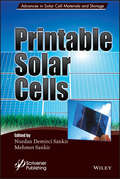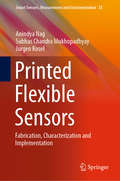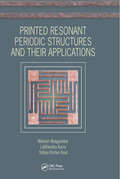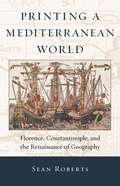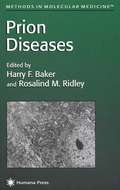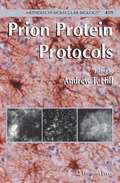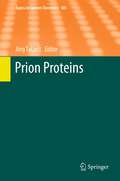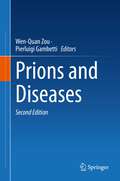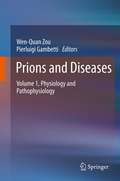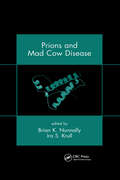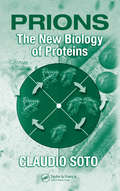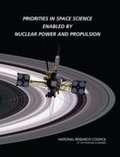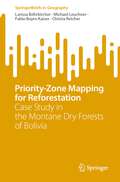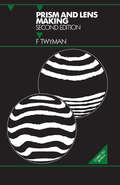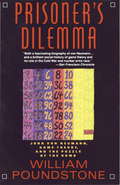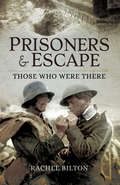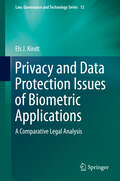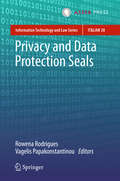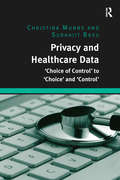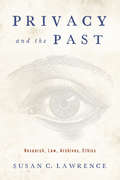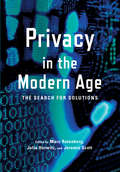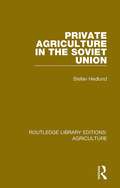- Table View
- List View
Principles of the Theory of Solids
by J. M. ZimanProfessor Ziman's classic textbook on the theory of solids was first pulished in 1964. This paperback edition is a reprint of the second edition, which was substantially revised and enlarged in 1972. The value and popularity of this textbook is well attested by reviewers' opinions and by the existence of several foreign language editions, including German, Italian, Spanish, Japanese, Polish and Russian. The book gives a clear exposition of the elements of the physics of perfect crystalline solids. In discussing the principles, the author aims to give students an appreciation of the conditions which are necessary for the appearance of the various phenomena. A self-contained mathematical account is given of the simplest model that will demonstrate each principle. A grounding in quantum mechanics and knowledge of elementary facts about solids is assumed. This is therefore a textbook for advanced undergraduates and is also appropriate for graduate courses.
Printable Solar Cells
by Mehmet Sankir Nurdan Demirci SankirThis book provides an overall view of the new and highly promising materials and thin film deposition techniques for printable solar cell applications. The book is organized in four parts. Organic and inorganic hybrid materials and solar cell manufacturing techniques are covered in Part I. Part II is devoted to organic materials and processing technologies like spray coating. This part also demonstrates the key features of the interface engineering for the printable organic solar cells. The main focus of the Part III is the perovskite solar cells, which is a new and promising family of the photovoltaic applications. Finally, inorganic materials and solution based thin film formation methods using these materials for printable solar cell application is discussed in Part IV.
Printed Flexible Sensors: Fabrication, Characterization and Implementation (Smart Sensors, Measurement and Instrumentation #33)
by Subhas Chandra Mukhopadhyay Anindya Nag Jurgen KoselThis book presents recent advances in the design, fabrication and implementation of flexible printed sensors. It explores a range of materials for developing the electrode and substrate parts of the sensors, on the basis of their electrical and mechanical characteristics. The sensors were processed using laser cutting and 3D printing techniques, and the sensors developed were employed in a number of healthcare, environmental and industrial applications, including: monitoring of physiological movements, respiration, salinity and nitrate measurement, and tactile sensing. The type of sensor selected for each application depended on its dimensions, robustness and sensitivity. The sensors fabricated were also embedded in an IoT-based system, allowing them to be integrated into real-time applications.
Printed Resonant Periodic Structures and Their Applications
by Shiban Kishen Koul Mahesh Abegaonkar Lalithendra KurraThis book is a reference for researchers who want to learn about resonant periodic structures for applications in microstrip circuits. The readers can learn simple methods to analyze these structures using commercially available software and equivalent circuit modelling. The application examples demonstrated in the book will open up new research ideas in this field.
Printing a Mediterranean World: Florence, Constantinople, and the Renaissance of Geography
by Sean RobertsIn 1482 Francesco Berlinghieri produced the Geographia, a book of over 100 folio leaves describing the world in Italian verse interleaved with lavishly engraved maps. Roberts demonstrates that the Geographia represents the moment of transition between printing and manuscript culture, while forming a critical base for the rise of modern cartography.
Prion Diseases
by Harry F. Baker Rosalind M. RidleyLeading researchers and clinicians describe their state-of-the-art findings and hypotheses arising from a variety of different approaches to this group of diseases. Their approaches include clinical presentations, epidemiology, transgenic methods, and diagnostic tests via transmission electron microscopy and immunoblotting. The diseases treated range from human to animal spongiform encephalopathies and include Creutzfeldt-Jakob disease, mad cow disease, and scrapie.
Prion Protein Protocols
by Andrew F. HillWhile much information has been gained regarding the molecular nature of prion proteins, only recently have several research groups begun to cast light on turning the normal prion protein into its aberrant, infectious form. In this book, a team of experts provide the most up-to-date collection of current methods in this unique area of neuroscience. Comprehensive and cutting-edge, this is an ideal collection for researchers investigating the growing field of mammalian prion disease.
Prion Proteins
by Jörg TatzeltGenetics of Prion Disease, by S. Lloyd, S. Mead and J. Collinge. Atypical Prion Diseases in Humans and Animals, by M. A. Tranulis, S. L. Benestad, T. Baron and H. Kretzschmar. Chronic Wasting Disease, by S. Gilch, N. Chitoor, Y. Taguchi, M. Stuart, J. E. Jewell and H. M. Schätzl. Transgenic Mouse Models and Prion Strains, by G. C. Telling. Neuroprotective and Neurotoxic Signaling by the Prion Protein, by U. K. Resenberger, K. F. Winklhofer and J. Tatzelt. Prion Seeded Conversion and Amplification Assays, by C. D. Orrú and B. Caughey. Prion Protein and Its Conformational Conversion: A Structural Perspective, by W. K. Surewicz and M. I. Apostol. Molecular Dynamics as an Approach to Study Prion Protein Misfolding and the Effect of Pathogenic Mutations, by M.W. van der Kamp and V. Daggett. Chemical Biology of Prion Protein: Tools to Bridge the In Vitro/Vivo Interface, by R. Seidel and M. Engelhard. The PrP-Like Proteins Shadoo and Doppel, by D. Westaway, N. Daude, S. Wohlgemuth and P. Harrison. Fungal Prions: Structure, Function and Propagation, by M. F. Tuite, R. Marchante and V. Kushnirov.
Prions and Diseases
by Wen-Quan Zou Pierluigi GambettiTransmissible spongiform encephalopathies (TSE), known as prion diseases, have been recognized for nearly 300 years in animals and almost 100 years in humans. Modern studies, including the protein-misfolding cyclic amplification (PMCA), have greatly advanced our understanding of the pathogenesis of prion diseases and facilitated the identification of new prion diseases in animals and humans. In the second edition of Prions and Diseases, more than 60 leading researchers and clinicians worldwide provide an up-to-date discussion of these unique infectious pathogens and their associated diseases. The book provides up-to-date knowledge about the etiology, pathogenesis, classification, histopathological, and clinical aspects of the full range of animal and human prion diseases. As a result, the book contains by far the most authoritative views about the past, present, and future of prions and prion diseases. The new second edition covers such important emerging topics such as inherited human prion disease, stem-cell models in prion research, human prion disease surveillance, and gene therapy strategies.
Prions and Diseases: Volume 1, Physiology and Pathophysiology
by Wen-Quan Zou Pierluigi GambettiVolume I highlights the association of the cellular prion protein (PrPC) with copper and zinc, the potential roles of PrPC in Alzheimer's disease and cancers, insoluble PrPC, PMCA, molecular and cellular mechanisms of PrPSc formation and clearance, possible co-factors involved in the conversion of PrPC into PrPSc, infectious and pathogenic forms of PrP, cell biology of prions, prion strains and their interference, as well as yeast prions and their inheritable and structural traits. This unique volume will take you through the fascinating chronicle of prions in mammals, yeast, and fungi.
Prions and Diseases: Volume 2, Animals, Humans and the Environment
by Wen-Quan Zou Pierluigi GambettiVolume II features a variety of animal and human prion diseases, including the newly-identified atypical forms of bovine spongiform encephalopathy and scrapie in animals, and variably protease-sensitive prionopathy in humans, prions in the environment, Tau pathology in human prion disease, transmission of the disease by blood transfusion, mammalian and non-mammalian models, conventional and advanced diagnoses, prion-specific antibodies, as well as decontamination of prions and development of therapeutics of prion diseases, such as the application of immunomodulation. This volume provides up-to-date knowledge about the etiology, pathogenesis, classification, histopathological, and clinical aspects of the highly publicized animal and human prion diseases.
Prions and Mad Cow Disease
by Brian K. Nunnally Ira S. KrullThe alarm sounded by Canada's confirmed case of bovine spongiform encephalopathy (BSE) has reaffirmed the exigency of establishing improved safeguards and more aggressive surveillance protocols in North America and around the world. Research converging on the probable causative agent--prion proteins--calls for intensive assessment of the headway gained in tracing prions, testing for transmissible neurodegenerative diseases, and developing methods for cornering the epidemic. With an illustrious panel of 36 international contributors, this timely book marshals techniques for prion protein assay and diagnosis of transmissible spongiform encephalopathies (TSEs).
Prions: The New Biology of Proteins
by Claudio SotoPrion-related diseases, known as transmissible spongiform encephalopathies (TSEs), are infectious, fatal neurodegenerative disorders for which there is no cure, treatment, nor even a means for early diagnosis. The horrific advent of Mad Cow Disease -- transmitted to humans through eating meat from steers sickened by bovine spongiform encephalopathy
Priorities In Space Science Enabled By Nuclear Power And Propulsion
by National Research Council of the National AcademiesIn 2003, NASA began an R&D effort to develop nuclear power and propulsion systems for solar system exploration. This activity, renamed Project Prometheus in 2004, was initiated because of the inherent limitations in photovoltaic and chemical propulsion systems in reaching many solar system objectives. To help determine appropriate missions for a nuclear power and propulsion capability, NASA asked the NRC for an independent assessment of potentially highly meritorious missions that may be enabled if space nuclear systems became operational. This report provides a series of space science objectives and missions that could be so enabled in the period beyond 2015 in the areas of astronomy and astrophysics, solar system exploration, and solar and space physics. It is based on but does not reprioritize the findings of previous NRC decadal surveys in those three areas.
Priority-Zone Mapping for Reforestation: Case Study in the Montane Dry Forests of Bolivia (SpringerBriefs in Geography)
by Christa Reicher Michael Leuchner Larissa Böhrkircher Fabio Bayro KaiserAndean dry forest ecosystems are threatened by deforestation and unsustainable land use methods. The negative effects for the livelihood of the local population, biodiversity, and the regional climate could be countered by reforestation measures; however, dry land forests have not attracted the same level of interest and investment like other ecosystems. This book describes the development of a priority-zone map for reforestation measures, showing where reforestation might have the greatest social and ecological benefits. To achieve this, a problem analysis of a case study region is conducted and thematic reforestation benefits are determined. Using remote sensing and GIS, the areas where benefits can be obtained are mapped in individual layers and compiled into a summarizing priority-zone map. It is thus possible to identify areas where reforestation would achieve multiple benefits. The concept of priority maps could be used to facilitate reforestation strategies by local communities and municipal governments and could thus contribute to initiate an integrated forest and landscape restoration of the Bolivian montane dry forests.
Prism and Lens Making: A Textbook for Optical Glassworkers
by Twyman FPrism and Lens Making: A Textbook for Optical Glassworkers, Second Edition is a unique compendium of the art and science of the optical working of glass for the production of mirrors, lenses, and prisms. Incorporating minor corrections and a foreword by Professor Walter Welford FRS, this reissue of the 1957 edition provides a wealth of technical information and hands-on guidance gained from a lifetime of experience. Although some of the techniques have been replaced by more modern methods, this classic book is still a valuable source of practical assistance as well as being a pleasure to read.
Prisoner's Dilemma
by William PoundstoneJohn von Neumann invented the digital computer, played a key role in the development of the atom bomb, constructed a branch of mathematics known as game theory, and became a defender of a movement to bomb the Russians before they could bomb us. Now comes a biography of this controversial genius and an exploration of his greatest idea--one that nearly triggered a nuclear war in 1950. Photographs.
Prisoners & Escape: Those Who Were There
by Rachel BiltonA wide range of personal experiences are covered in the eleven chapters of this book. Nearly all the stories are written by the participants who describe exactly what happened to them during the war. What makes them special is that they were written while the images were fresh in their minds. The experiences recorded are those of civilians and soldiers. Where possible information about these men has been provided to explain their life before and after the war. Also included are rarely seen images that augment the text.The writers tell true stories of spying, escape from certain death, escape from captivity and working for the Germans to help the Allied war effort. Edwin Woodhall describes his work in counter-intelligence, spies, counter-spies and disguises, in the early days of the war. Harold Beaumont tells the dramatic story of his escape through Belgium where he was helped by Nurse Cavell. The hardships and difficulties an escaper faced are detailed by Walter Ellison, who failed to get away, while a successful escape is told by Duncan Grinnell-Milne who returned to flying over the Western Front and quickly found himself in no mans land when his plane crashed. Captain Evans was eventually a successful escaper as was H.G. Durnford who managed to escape the first time. Marthe McKenna, one of the most famous spies in the war, tells of the time she was ordered to investigate and assist in a plot to assassinate the Kaiser. Esmee Sartorius tells of her escape to Holland at the start of the war, and the breath-taking thrills of two men disguised as German officers is told by Lieutenant Marchal. The final story describes how Trooper Potts escaped certain death while rescuing his friend on Burnt Hill in Gallipoli.
Prisons of Light: Black Holes
by Kitty FergusonWhat is a black hole? Could we survive a visit to one? Perhaps even venture inside? What would we find? Have we yet discovered any real black holes? And what do black holes teach us about what physicist John Archibald Wheeler called “the deep, happy, mysteries of the universe”?These are just a few of the tantalizing questions examined in this jargon-free review of one of the most fascinating topics in modern science. In search of the answers, we trace a star from its birth to its death throes, take a fabulous hypothetical journey to the border of a black hole and beyond, spend time with some of the world’s leading theoretical physicists and observational astronomers scanning the cosmos for evidence of real black holes, and take a whimsical look at some of the wild ideas black holes have inspired.
Privacy and Data Protection Issues of Biometric Applications
by Els J. KindtThis book discusses all critical privacy and data protection aspects of biometric systems from a legal perspective. It contains a systematic and complete analysis of the many issues raised by these systems based on examples worldwide and provides several recommendations for a transnational regulatory framework. An appropriate legal framework is in most countries not yet in place. Biometric systems use facial images, fingerprints, iris and/or voice in an automated way to identify or to verify (identity) claims of persons. The treatise which has an interdisciplinary approach starts with explaining the functioning of biometric systems in general terms for non-specialists. It continues with a description of the legal nature of biometric data and makes a comparison with DNA and biological material and the regulation thereof. After describing the risks, the work further reviews the opinions of data protection authorities in relation to biometric systems and current and future (EU) law. A detailed legal comparative analysis is made of the situation in Belgium, France and the Netherlands. The author concludes with an evaluation of the proportionality principle and the application of data protection law to biometric data processing operations, mainly in the private sector. Pleading for more safeguards in legislation, the author makes several suggestions for a regulatory framework aiming at reducing the risks of biometric systems. They include limitations to the collection and storage of biometric data as well as technical measures, which could influence the proportionality of the processing. The text is supported by several figures and tables providing a summary of particular points of the discussion. The book also uses the 2012 biometric vocabulary adopted by ISO and contains an extensive bibliography and literature sources.
Privacy and Data Protection Seals (Information Technology and Law Series #28)
by Vagelis Papakonstantinou Rowena RodriguesThe book presents timely and needed contributions on privacy and data protection seals as seen from general, legal, policy, economic, technological, and societal perspectives. It covers data protection certification in the EU (i.e., the possibilities, actors and building blocks); the Schleswig-Holstein Data Protection Seal; the French Privacy Seal Scheme; privacy seals in the USA, Europe, Japan, Canada, India and Australia; controversies, challenges and lessons for privacy seals; the potential for privacy seals in emerging technologies; and an economic analysis. This book is particularly relevant in the EU context, given the General Data Protection Regulation (GDPR) impetus to data protection certification mechanisms and the dedication of specific provisions to certification. Its coverage of practices in jurisdictions outside the EU also makes it relevant globally. This book will appeal to European legislators and policy-makers, privacy and data protection practitioners, certification bodies, international organisations, and academics.Rowena Rodrigues is a Senior Research Analyst with Trilateral Research Ltd. in London and Vagelis Papakonstantinou is a Senior Researcher at the Vrije Universiteit Brussel in Brussels.
Privacy and Healthcare Data: 'Choice of Control' to 'Choice' and 'Control'
by Subhajit Basu Christina MunnsIn order for the information society to realise its full potential, personal data has to be disclosed, used and often shared. This book explores the disclosure and sharing of data within the area of healthcare. Including an overview of how health information is currently managed, the authors argue that with changes in modern society, the idea of personal relationships with a local GP who solely holds and controls your health records is becoming rapidly outdated. The authors aim to encourage and empower patients to make informed choices about sharing their health data. They do this by developing a three-stage theoretical model for change to the roles of the NHS and the individual. The study generates debate to stimulate and inspire new models and policy, and to provoke new visions for the sharing of healthcare data. Such discussion is framed through an exploration of the changing concept of 'privacy' and 'patient control' in healthcare information management. The volume draws on best practices from Europe and the USA and combines these to form a suggested vision for the UK as an early adopter of change. The volume will be essential reading for academics in the field of privacy and data protection, as well as healthcare and informatics professionals across different jurisdictions.
Privacy and the Past: Research, Law, Archives, Ethics
by Susan C. LawrenceWhen the new HIPAA privacy rules regarding the release of health information took effect, medical historians suddenly faced a raft of new ethical and legal challenges--even in cases where their subjects had died years, or even a century, earlier. In Privacy and the Past, medical historian Susan C. Lawrence explores the impact of these new privacy rules, offering insight into what historians should do when they research, write about, and name real people in their work. Lawrence offers a wide-ranging and informative discussion of the many issues involved. She highlights the key points in research ethics that can affect historians, including their ethical obligations to their research subjects, both living and dead, and she reviews the range of federal laws that protect various kinds of information. The book discusses how the courts have dealt with privacy in contexts relevant to historians, including a case in which a historian was actually sued for a privacy violation. Lawrence also questions who gets to decide what is revealed and what is kept hidden in decades-old records, and she examines the privacy issues that archivists consider when acquiring records and allowing researchers to use them. She looks at how demands to maintain individual privacy both protect and erase the identities of people whose stories make up the historical record, discussing decisions that historians have made to conceal identities that they believed needed to be protected. Finally, she encourages historians to vigorously resist any expansion of regulatory language that extends privacy protections to the dead. Engagingly written and powerfully argued, Privacy and the Past is an important first step in preventing privacy regulations from affecting the historical record and the ways that historians write history.
Privacy in the Modern Age
by Marc Rotenberg Jeramie Scott Julia HorwitzThe threats to privacy are well known: the National Security Agency tracks our phone calls; Google records where we go online and how we set our thermostats; Facebook changes our privacy settings when it wishes; Target gets hacked and loses control of our credit card information; our medical records are available for sale to strangers; our children are fingerprinted and their every test score saved for posterity; and small robots patrol our schoolyards and drones may soon fill our skies.The contributors to this anthology don't simply describe these problems or warn about the loss of privacy-they propose solutions. They look closely at business practices, public policy, and technology design, and ask, "Should this continue? Is there a better approach?" They take seriously the dictum of Thomas Edison: "What one creates with his hand, he should control with his head." It's a new approach to the privacy debate, one that assumes privacy is worth protecting, that there are solutions to be found, and that the future is not yet known. This volume will be an essential reference for policy makers and researchers, journalists and scholars, and others looking for answers to one of the biggest challenges of our modern day. The premise is clear: there's a problem--let's find a solution.
Private Agriculture in the Soviet Union (Routledge Library Editions: Agriculture #15)
by Stefan HedlundFirst published in 1989. Perestroika, it was widely believed, must succeed in agriculture before permanent change could be affected elsewhere in the Soviet economy. But Soviet agriculture had so far remained stubbornly inefficient and resistant to change. In this book Stefan Hedlund investigates the reasons for this state of affairs. The author gives an account of the emergence, development and performance of private agriculture in the Soviet Union. In particular he describes the essentials of the peculiarly Soviet hybrid of private and socialized agriculture. He places the private sector within the broader framework of Soviet agriculture. He saw Soviet agriculture as a ‘Black Hole’, ready to absorb any resources that came near, be they private plots, urban gardens, factory workshops or military units. Hedlund also examines the impact on the peasants as producers of decades of negative ideological pronouncements in Party propaganda, and of discrimination and at times outright harassment by local officials. He points out that this background makes the prospect of any positive response from the peasants to Gorbachev’s call for perestroika in agriculture extremely unlikely.

